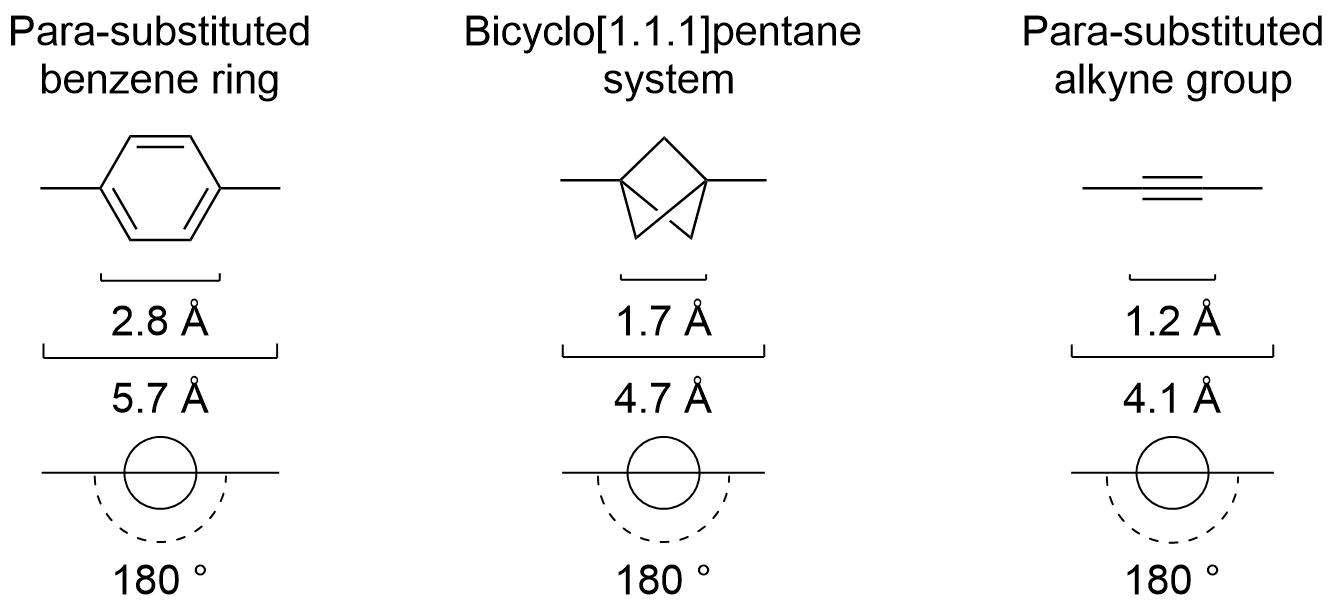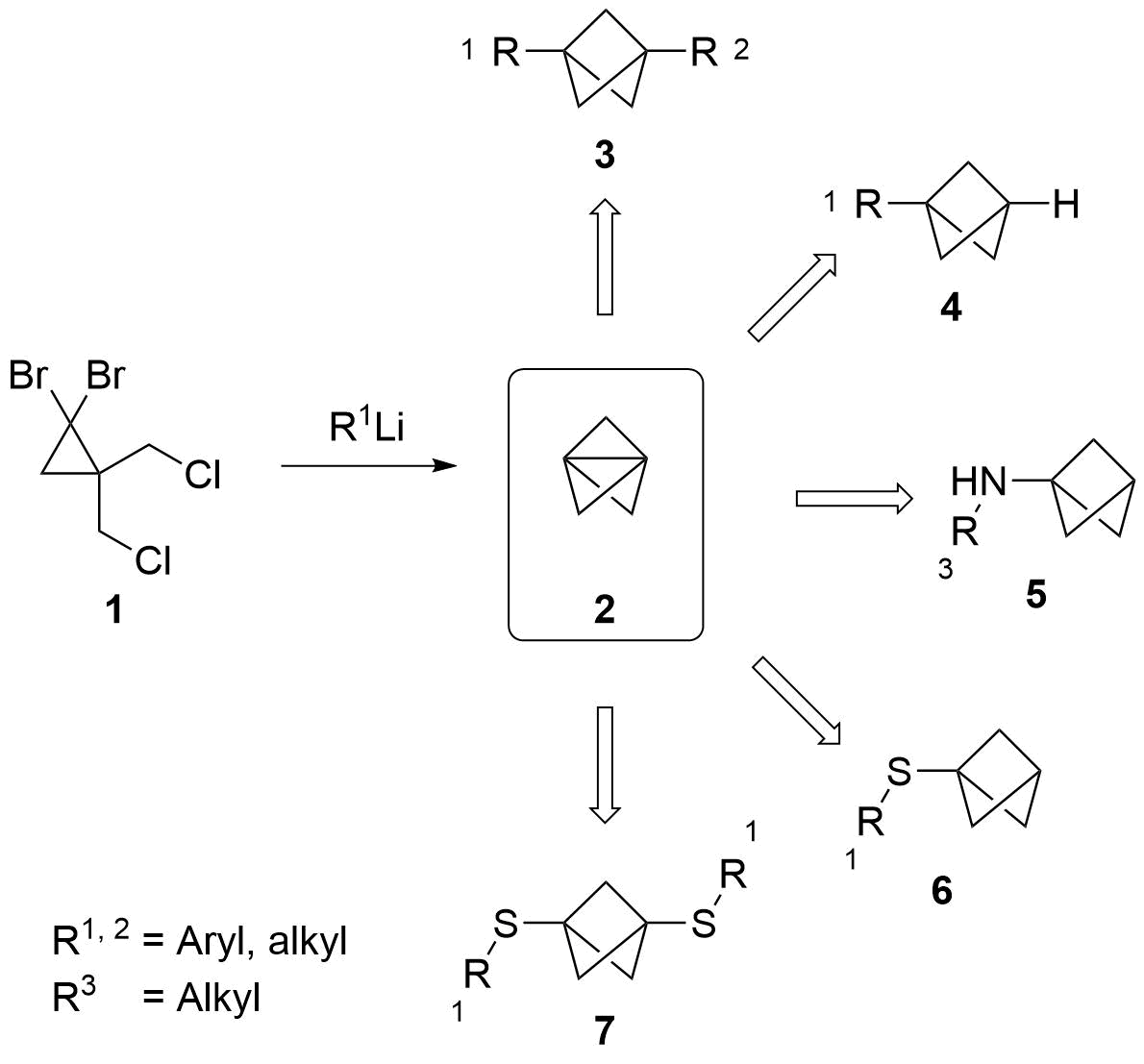Bioisosters
The application of bioisosters in drug development is an increasing field due to novel synthetic methods and thereby the accessibility of new building blocks. By incorporating unusual motifs the desired properties of a lead compound can be improved or even new mechanisms of action can be identified.
We currently focus on the strained bicyclo[1.1.1]pentane (BCP) moiety as a bioisoster for para‑substituted phenyl rings or alkynes (Figure 1).
Figure 1. Comparison of a para-substituted benzene ring, a bicyclo[1.1.1]pentane system and a para-substituted alkyne group in spacial features.
BCPs are accessible from [1.1.1]propellane (2), a tricyclic hydrocarbon with unique structure and reactivity (Scheme 1).[1] Different approaches have enabled the introduction of BCP in a variety of compounds in recent years.
Scheme 1. Propellane synthesis and derived BCP products.
The thiol addition to 2[2] and subsequent reactions to the sulfoxides, sulfones, sulfoximines or sulfonamide enable the synthesis of bioisoster compounds with interesting biological properties (Scheme 2).
Scheme 2. Thiol addition to 2 and further modification of the resulting sulfides 6 to sulfilimines (9, n = 0), sulfoximines (9, n = 1) and their N-substituted derivatives.
Sulfonamides are known to have an antimicrobial effect and have been incorporated in many drug compounds already. The similar sulfoximines (“chemical chameleons”) and sufilimines are classes of chiral ligands and are therefore of great interest for catalysis and drug development. Their N-substituted derivatives are useful building blocks for the investigation of structure-activity relationships.
[1] a) A. M. Dilmaç, E. Spuling, A. de Meijere, S. Bräse, Angew. Chem. 2017, 129, 5778–5813; b) A. M.
Dilmaç, E. Spuling, A. de Meijere, S. Bräse, Angew. Chem. Int. Ed. 2017, 56, 5684–5718.
[2] R. M. Bär, S. Kirschner, M. Nieger, S. Bräse, Chem. Eur. J. 2018, 24, 1373–1382.



